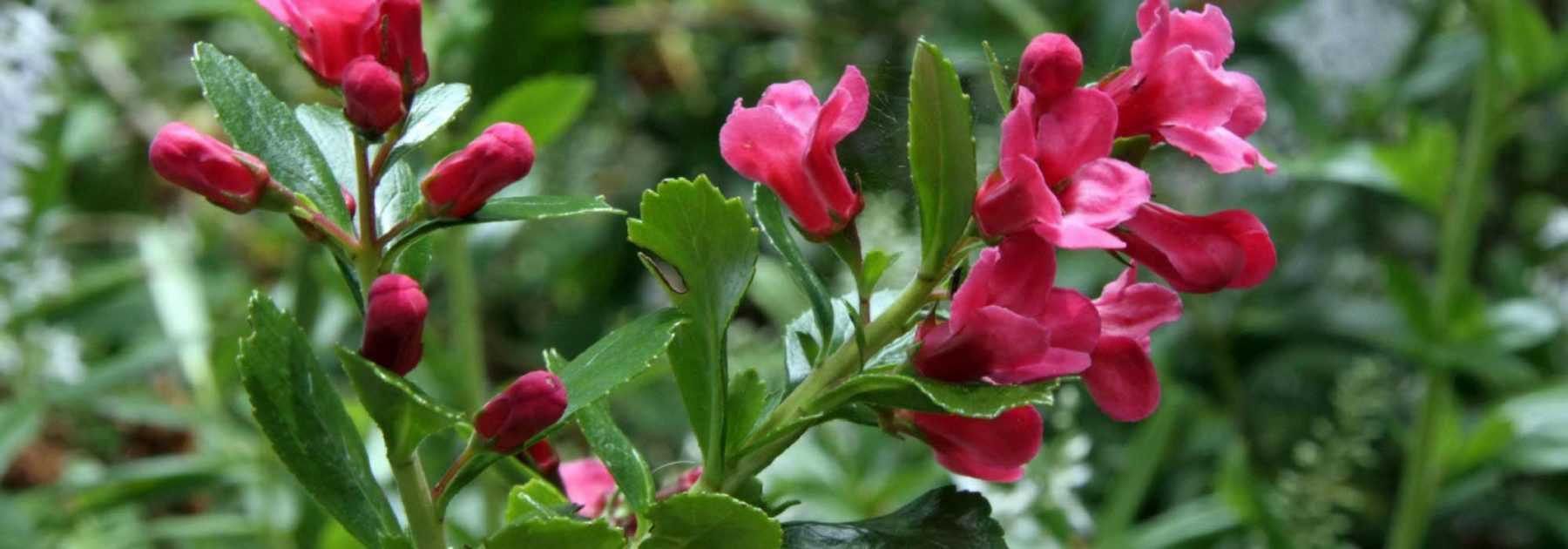
Escallonia: Planting, Pruning and Care
Contents
Escallonia in a few words
- Escallonia is an essential shrub for gardens in mild and coastal climates
- Its abundant and long-lasting pink or white flowering brightens the garden throughout summer
- With its evergreen foliage of beautiful glossy green, it makes an excellent hedge shrub, whether left natural or trimmed
- It thrives in ordinary, well-drained soil in full sun and sheltered from draughts
- Fast-growing, it’s highly disease-resistant, easy to maintain and cultivate
Our expert's word
The escallonia, with its abundant pink or white blooms that last all summer, rapid growth and evergreen foliage in glossy green or yellow, is one of those rewarding shrubs that are essential in your garden if your climate allows it.
Well-known to gardeners in Brittany or England, Escallonia is ideal for creating coastal hedges. It makes up for its limited hardiness (-10°C) with excellent resistance to salt spray, making it a must-have for seaside gardens.
From white escallonia (Escallonia Iveyi) to red escallonia (Escallonia rubra), including pink varieties, this beautiful evergreen shrub is truly low-maintenance.
Escallonia thrives in sun, tolerates shade, salt spray and even dry summers once established. It prefers ordinary, well-drained soil in a spot sheltered from cold winds.
We offer many varieties of evergreen escallonias, perfect for flowering hedges or mixed borders… Discover them!
Description and botany
Botanical data
- Latin name Escallonia
- Family Escalloniaceae
- Common name Escallonia
- Flowering from June to September
- Height 0.80 to 3 m
- Exposure sun, partial shade
- Soil type all types, well-drained
- Hardiness -10° C
The Escallonia genus comprises around sixty species of mostly evergreen shrubs or trees, native to the wooded high-altitude regions of South America, particularly Chile, the Andes mountains and Argentina. In the wild, these shrubs from the Escalloniaceae family grow among scrubland, hillsides or on coastal areas exposed to sea spray.
Escallonia rubra, with red flowers, and E. virgata, one of the few deciduous species, gave rise to most hybrids. Escallonia rubra var. Macrantha, with larger leaves than others, is one of the many forms that Escallonia rubra takes in its natural habitat.
Vigorous and moderate to fast-growing, it forms a dense, branched bush, rounded or upright, reaching up to 3m in all directions at maturity. The habit and vigour vary between hybrids; some horticultural hybrids (‘Red Carpet’) stand out for their spreading, bushy and very compact habit.
Escallonia is distinguished by its fragrant, glossy and leathery foliage which generally persists through winter, brightening the garden all year round. Its small, toothed leaves, 1 to 8 cm long, alternate, are densely packed along almost the entire length of the stems. They sometimes have a succulent appearance. Oval-shaped, they are dark glossy green in most varieties. Escallonia laevis ‘Gold Ellen’ boasts stunning golden yellow foliage speckled with green.
The foliage is slightly aromatic when crushed.
Flowering is abundant and lasts all summer. From June until September, more or less early depending on the climate, without interruption, fleshy flowers with five petals, cup-shaped or semi-open tubes, depending on the species, bloom amidst the lush foliage.
Gathered in panicles or small clusters of 3 to 30 cm at the tip of each branch, they range from pure white to red through all shades of pink, from deep pink to crimson. These small tubular bells evoke apple blossoms in their colour, waxy texture and delicacy.
Escallonia is an excellent garden plant in mild climates. With limited hardiness, around -10°C, this frost-sensitive shrub prefers planting in full sun and sheltered from draughts, in preferably slightly acidic or neutral soil, both fertile and well-drained.
This easy-to-grow shrub is widely used in coastal regions, as an evergreen hedge, in borders or in containers on terraces.


Escallonia flowers: Escallonia ‘Apple Blossom’ / Escallonia rubra ‘Crimson Spire’ / Escallonia rubra ‘Macrantha’ / Escallonia ‘Iveyi’.
Main species and varieties
The Escallonia rubra has given rise to most hybrids which mainly differ in size, from vigorous to ground-covering, and in their blooms, ranging from white to pale pink or crimson. Some cultivars like Escallonia ‘Donard Seedling’ prove to be hardier (-15°C) than most Escallonias, which typically offer modest hardiness, around -5 to -10°C.
The tallest specimens are perfect for evergreen hedges, while more ground-hugging varieties like ‘Red Carpet’ work well as ground cover, in low hedges, or in containers on sheltered patios away from prevailing winds.
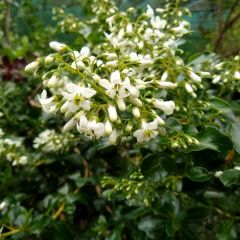
Escallonia Iveyi
- Flowering time July to October
- Height at maturity 2,50 m
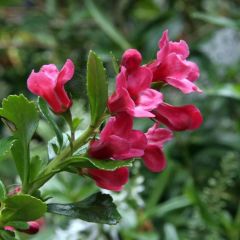
Escallonia virgata Pride of Donard
- Flowering time July to September
- Height at maturity 1,50 m
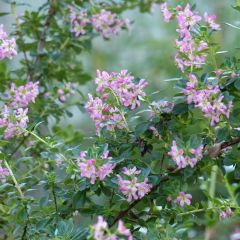
Escallonia virgata Apple Blossom
- Flowering time July to September
- Height at maturity 1,50 m

Escallonia Red Carpet
- Flowering time July to September
- Height at maturity 80 cm
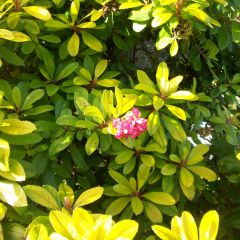
Escallonia laevis Gold Ellen
- Flowering time August, September
- Height at maturity 2,50 m
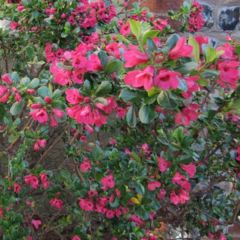
Escallonia Darts Rosy Red
- Flowering time August, September
- Height at maturity 2,50 m
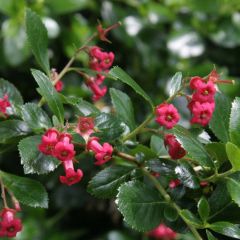
Escallonia rubra Crimson Spire
- Flowering time July to October
- Height at maturity 1,50 m
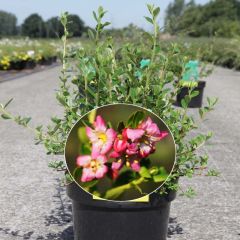
Escallonia Donard Seedling
- Flowering time July to September
- Height at maturity 2 m
Discover other Escallonias
Planting
Where to plant escallonia?
From its South American origins, escallonia has retained a rather tender nature and a love for warmth. It only dislikes excessively chalky soils or those that are too heavy, icy winds, and cold winters. It will still withstand light, short-lived frosts down to around -10°C once well established, and it will never thrive as well as when sheltered from the wind!
It makes an excellent choice for a free hedge or border in mild climates. Its thick, evergreen foliage tolerates sea spray well, making it also a must-have in coastal gardens in Brittany, Ireland, or England. It is equally at home in Mediterranean climates, where it can cope with occasionally dry soil with good mulching and watering.
Elsewhere, its hardiness is often put to the test, although it may regrow from the base in spring. It will only withstand sub-zero temperatures in very sheltered positions.
Give it a warm, sunny, and well-sheltered spot away from draughts, facing south against a wall or west at the back of a border or in a hedge, especially in colder regions: it cannot tolerate cold winter winds.
It loves the sun, where it flowers more abundantly, but tolerates partial shade in warm climates and even summer drought once well established. Not fussy about soil, it dislikes excessive lime and prefers well-drained, moist soil, preferably slightly acidic or neutral. It dislikes compacted, waterlogged soils in winter; avoid waterlogged areas.
The largest specimens can reach 3 metres in height with a similar spread; they will work wonders planted in an evergreen hedge, free-form, screening, or clipped in temperate regions.
With its long, generous flowering period, evergreen foliage, and robustness, escallonia makes an excellent substitute for conifers or Weigelas in mild climates, by the sea, and in dry or unwatered gardens.
More compact varieties like ‘Red Dream’ or ‘Red Carpet’, reaching no more than 80 cm in height, will be stunning used as large ground cover, in a small hedge, or in a pot on a well-sheltered terrace.
When to plant escallonia
Escallonia is best planted in spring, from March to June, in colder regions, or in autumn in very mild climates, once all risk of frost has passed.
How to plant escallonia?
In the ground
For hedge planting, space escallonia 60 to 80 cm apart.
- Soak the rootball in a bucket of water overnight before planting
- Loosen the soil well
- Dig a hole at least three times wider than the rootball and 50 cm deep
- Backfill with the excavated soil mixed with two buckets of compost and some potting soil, keeping the shrub upright
- Firm the soil gently
- Spread a 10 cm-thick organic mulch of pine bark, especially in warm regions
- Water thoroughly after planting and regularly during the growing season, especially for the first three summers after planting
In pots
- Use a fresh, well-draining mix of shrub compost blended with one or two spadefuls of well-rotted compost
- Choose a large container of at least 30 litres (30 to 40 cm in diameter) and place a layer of gravel or clay pebbles at the bottom
- Mulch the base
- Water well during the growing season and whenever the soil is dry
To learn more: Growing Escallonia in pots
Read also
Take extra care of your evergreen shrubsCare and Maintenance
Escallonia is a truly low-maintenance shrub that requires little care. In very poor soil, you may add some organic fertiliser in spring to stimulate its growth and flowering.
Spread a thick layer of organic mulch (pine bark or needles, leaf mould), renewed annually, to keep its roots cool during summer heat and warm in winter.
Ensure it never lacks water in summer during the first few years: water regularly for the first three summers to help it establish well. Water potted escallonias more frequently as the soil dries out faster.
When and how to prune an escallonia?
Escallonia grows quickly and often benefits from pruning once or twice a year to maintain a balanced shape or to restore a nice bushy form. In the first few years, to encourage the shrub to develop a dense, compact habit, prune back by one-third of its height.
Prune annually in late winter, in February-March, when frost is no longer a concern, to rebalance and refresh the branches, and again at the end of summer, in September, after flowering.
- For standalone specimens, a refreshing prune in spring is enough to rebalance or reduce the branches: with secateurs, remove any dead or weak wood that disrupts the shape.
- Pruning is particularly recommended for escallonias used in hedges: with hedge shears or loppers, lightly trim stems that spoil the symmetry and remove spent flowers. It can even be cut back more severely if you wish to reduce its spread or reshape an overly sparse specimen.
Escallonia can even be pruned into a ball shape.
Diseases and potential pests
Escallonia has no known enemies and is particularly resistant to diseases and pests. It only fears one thing: waterlogged soils, especially in winter, and excess lime. If the soil is too chalky, it may suffer from chlorosis, which manifests as a gradual yellowing of the leaves and eventually the decline of the shrub.
A well-drained soil regularly enriched with compost or peat will help prevent the disease.
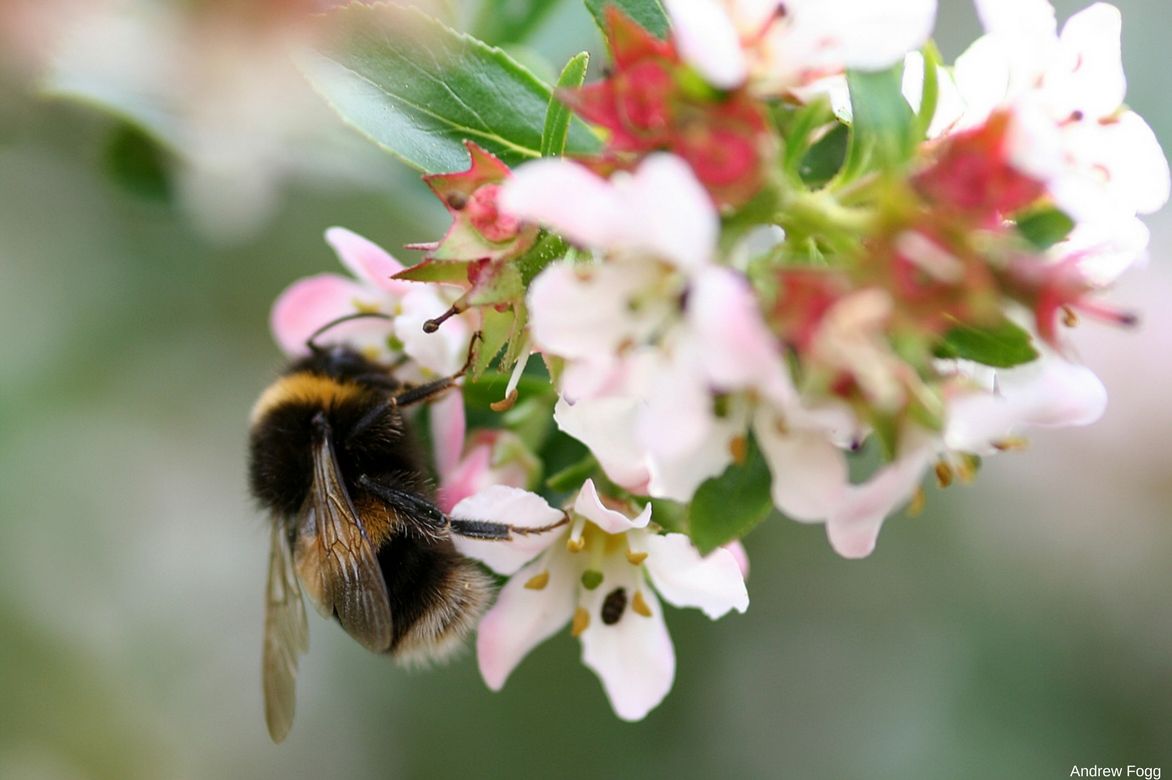
Escallonia flowers are rich in nectar.
Propagation: Taking Cuttings from Escallonia
Escallonia propagates easily from cuttings.
From softwood cuttings
- In June, cut a 10-15 cm stem below a leaf or bud that doesn’t have flowers or buds
- Remove the lower leaves, keeping those at the tip
- Plant in pots or trays using a light mix of peat and river sand
- Keep the cuttings moist and sheltered in warmth until rooted
- Transplant in March-April into individual pots filled with compost and sand
- Plant out in autumn when the root system is sufficiently developed
From semi-hardwood cuttings
Follow the same method in September using semi-woody stems (transitioning from soft to hard wood).
→ Learn more with our tutorial How to propagate Escallonia?
Pairing
Escallonia is the must-have shrub for mild climate gardens, bringing year-round interest with its glossy evergreen foliage and abundant summer blooms that last until the first frosts.
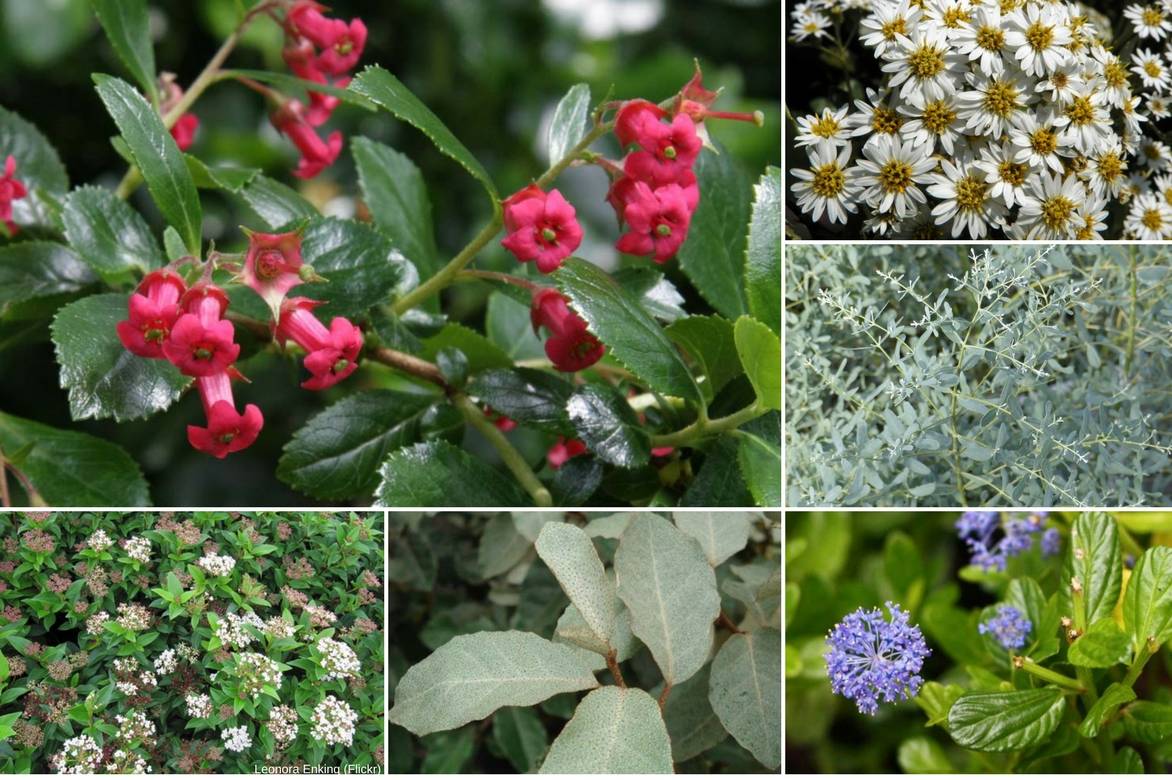
An example combination for an evergreen hedge in mild climates: Escallonia rubra ‘Crimson Spire’, Olearia macrodonta ‘Major’, Eucalyptus gunnii ‘France Bleu Rengun’, Ceanothus impressus ‘Victoria’, Eleagnus ebbingei, Viburnum tinus ‘Eve Price’.
A star performer for hedges, it’s essential for coastal gardens and temperate areas where it’s often used in informal hedges, borders or containers on patios.
In a flowering hedge, it pairs beautifully with deutzias, pink Japanese dogwood, Hebe or shrubby veronicas, oleanders, and brightens up the grey foliage of Elaeagnus.
In larger borders, it works wonders combined with beautiful perennials like Gaura, lavender, hardy geraniums, Phlox, white or pink roses, or with summer or spring-flowering shrubs like Kolkwitzia amabilis, broom (Cytisus ‘Zeelandia’), rockroses, butterfly bushes or ceanothus, creating beautiful low-maintenance flowering displays.
→ Discover 7 more great ideas for combining Escallonia in our advice sheet!
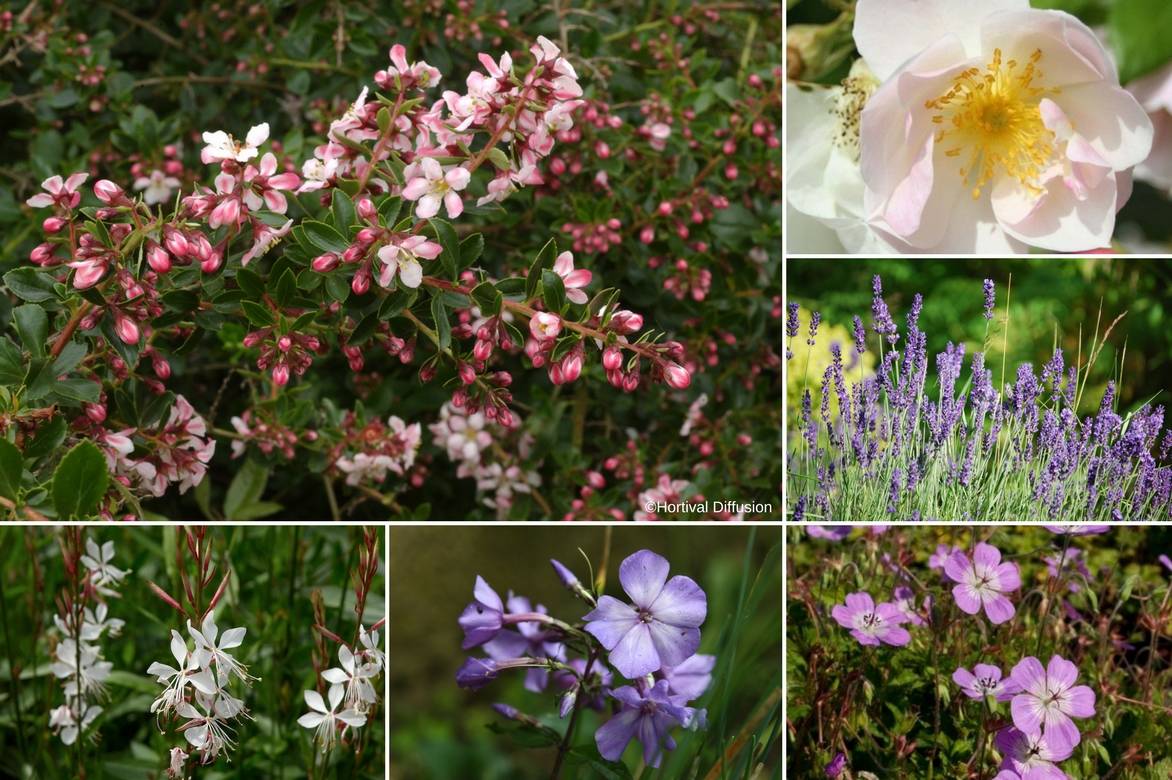
A border combination idea: Escallonia ‘Apple Blossom’, Rose ‘Nevada’, Lavandula officinalis, Geranium ‘Sylvia’s Surprise’, Phlox paniculata ‘Blue Paradise’, Gaura lindheimeri ‘Alba’.
Useful resources
- Discover the most beautiful escallonias to use for hedging or to grow in containers
- Find our advice in our guides: How to prune an Escallonia? and How to choose an Escallonia for your garden?
- Subscribe!
- Contents



































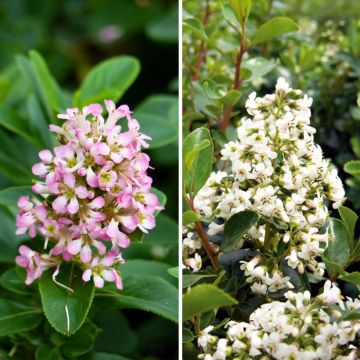

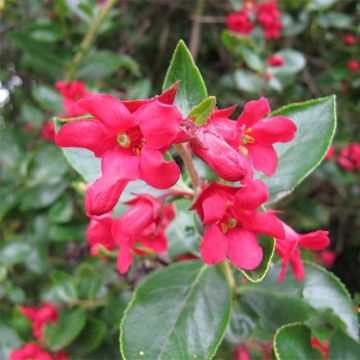

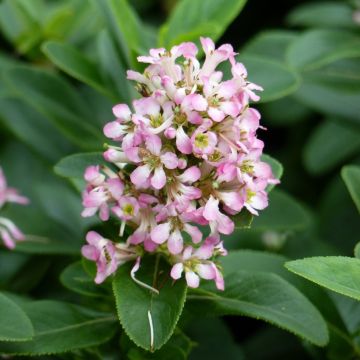


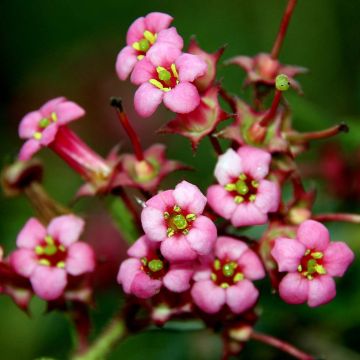




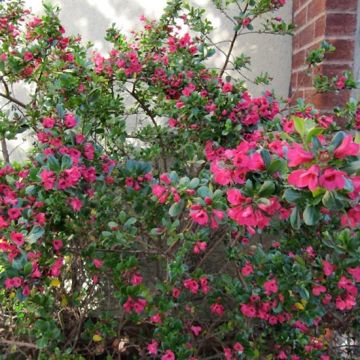
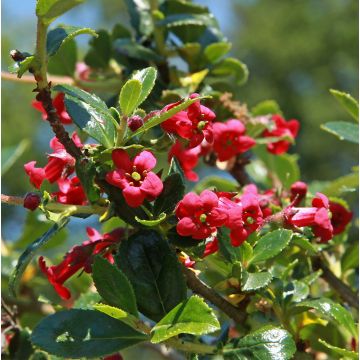
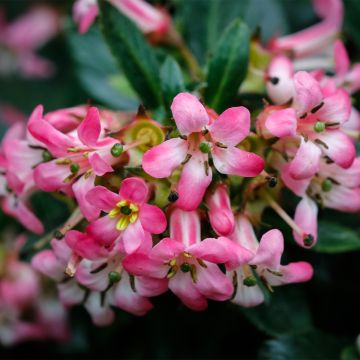
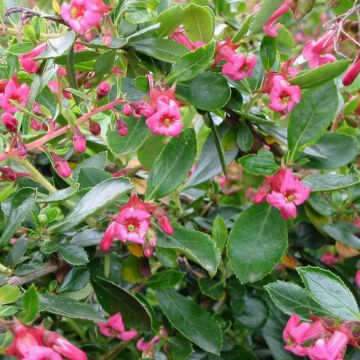
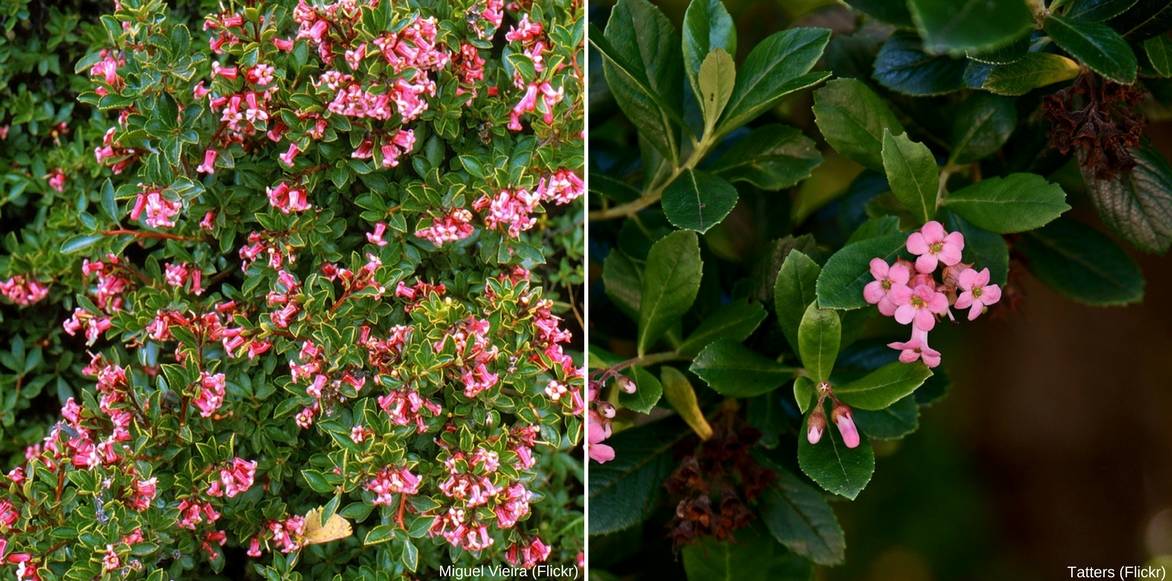
Comments